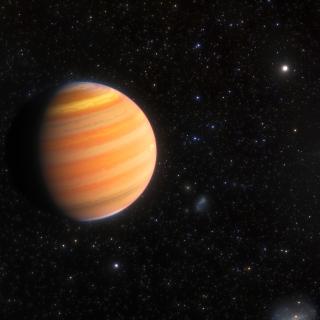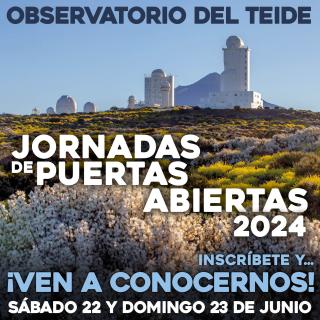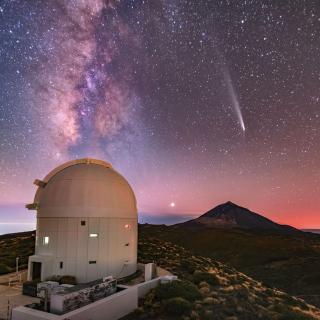It may interest you
-
 An international scientific team, in which the Instituto de Astrofísica de Canarias (IAC) participates, has discovered the extremely eccentric orbit of a gas giant exoplanet. This world, called TIC 241249530 b, not only follows one of the most drastically stretched-out orbits of all known transiting exoplanets, but also is also orbiting its star backwards, lending insight into the mystery of how these high-mass gas giants evolve into hot Jupiters , with very close and circular trajectories. The study is published in Nature. Within the population of known exoplanets, there are those thatAdvertised on
An international scientific team, in which the Instituto de Astrofísica de Canarias (IAC) participates, has discovered the extremely eccentric orbit of a gas giant exoplanet. This world, called TIC 241249530 b, not only follows one of the most drastically stretched-out orbits of all known transiting exoplanets, but also is also orbiting its star backwards, lending insight into the mystery of how these high-mass gas giants evolve into hot Jupiters , with very close and circular trajectories. The study is published in Nature. Within the population of known exoplanets, there are those thatAdvertised on -
 FULLY BOOKED Thank you very much for your interest in the Open Days 2024. All available places have been fully booked with the applications received. Those who have successfully registered will receive an email confirming their attendance or non-attendance as soon as possible. We regret that we are unable to attend all applications, but we encourage you to stay tuned for our next calls and events - we look forward to your participation in future activities! We would like to remind you that other visits are organised throughout the year and can be requested via our Visits page . CoincidingAdvertised on
FULLY BOOKED Thank you very much for your interest in the Open Days 2024. All available places have been fully booked with the applications received. Those who have successfully registered will receive an email confirming their attendance or non-attendance as soon as possible. We regret that we are unable to attend all applications, but we encourage you to stay tuned for our next calls and events - we look forward to your participation in future activities! We would like to remind you that other visits are organised throughout the year and can be requested via our Visits page . CoincidingAdvertised on -
 En 2025, el Instituto de Astrofísica de Canarias (IAC) celebra el cuarenta aniversario de su inauguración oficial en 1985, consolidándose como uno de los principales centros de investigación de Astrofísica a nivel internacional.Advertised on
En 2025, el Instituto de Astrofísica de Canarias (IAC) celebra el cuarenta aniversario de su inauguración oficial en 1985, consolidándose como uno de los principales centros de investigación de Astrofísica a nivel internacional.Advertised on